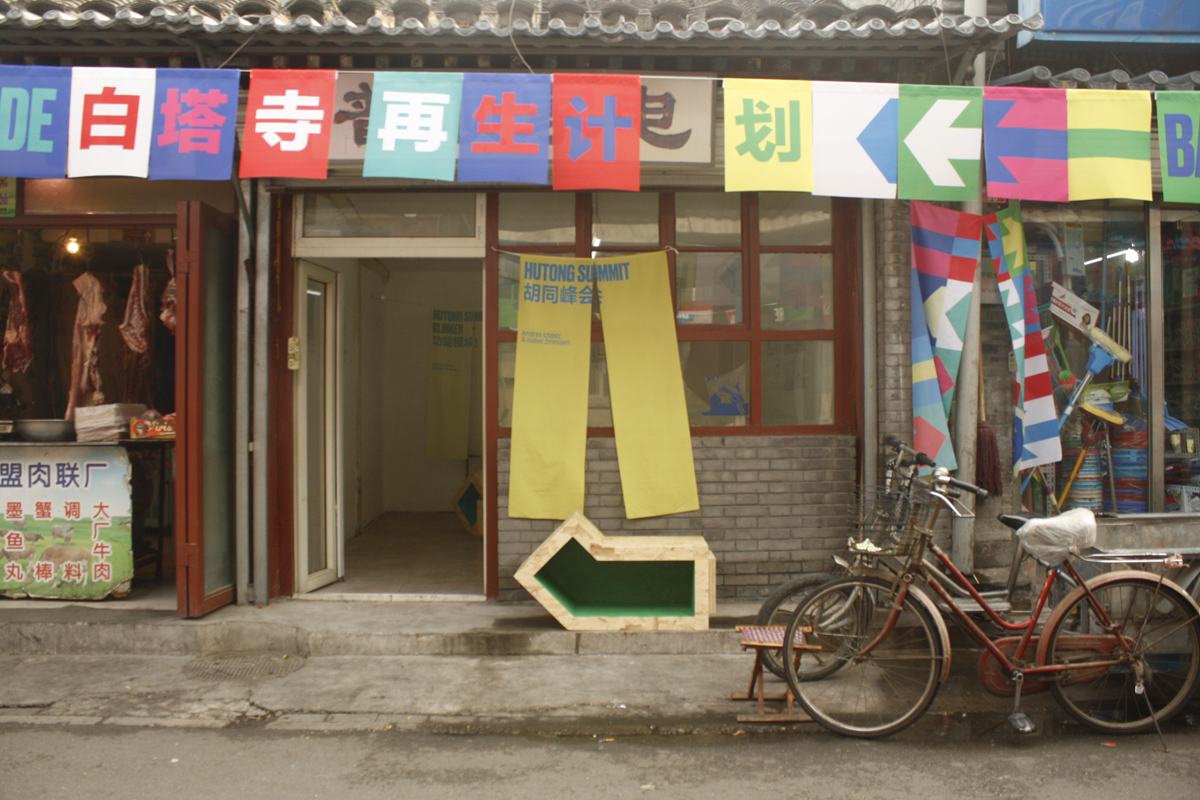

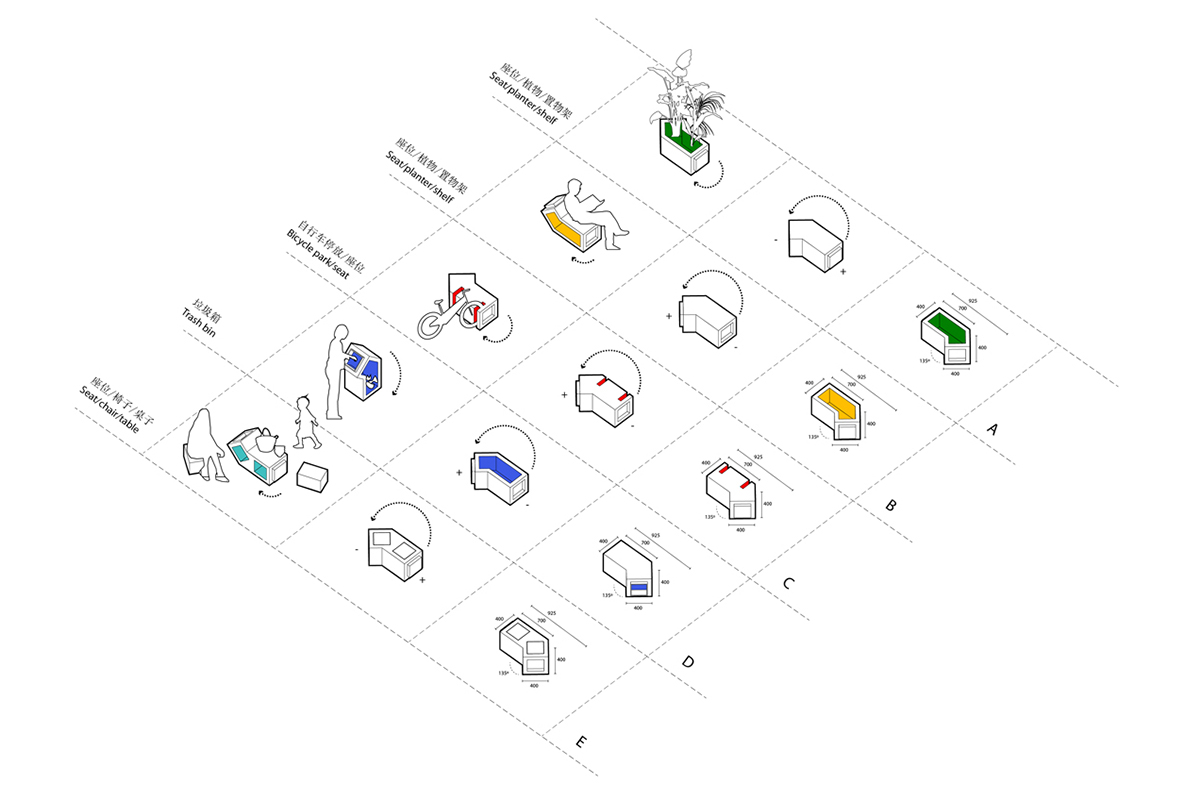
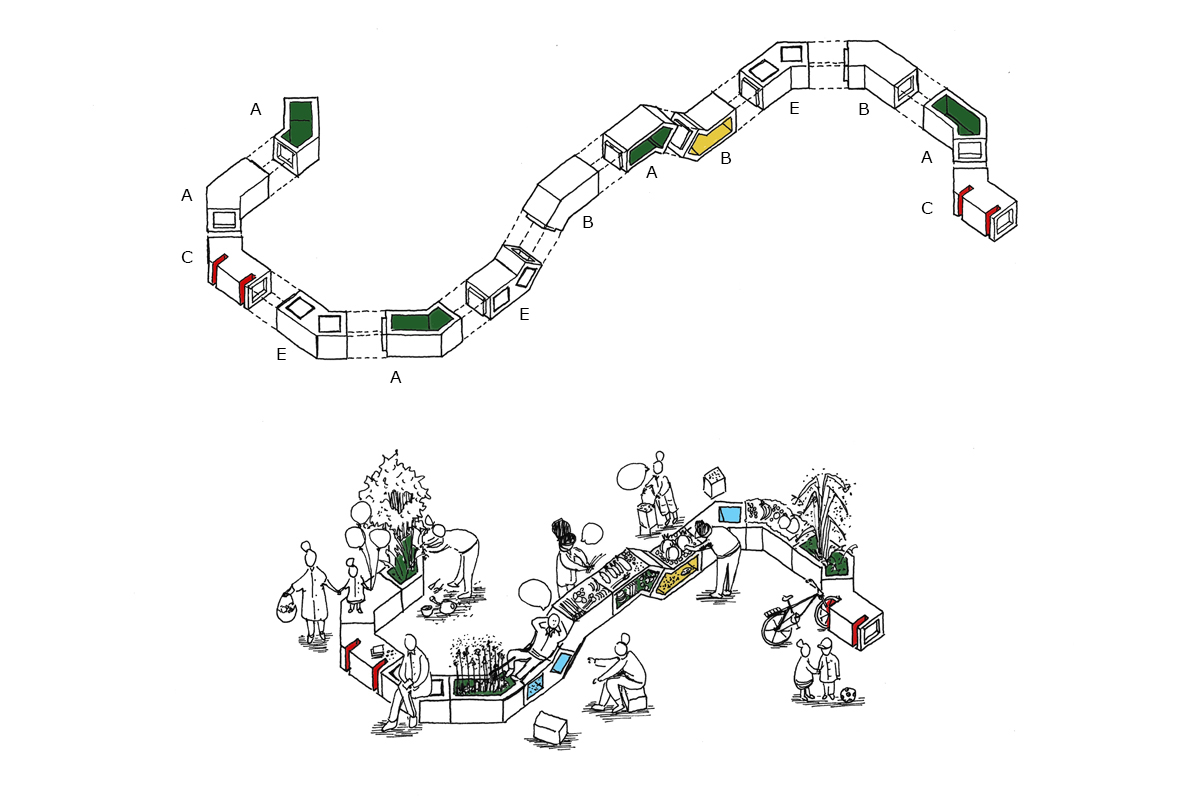
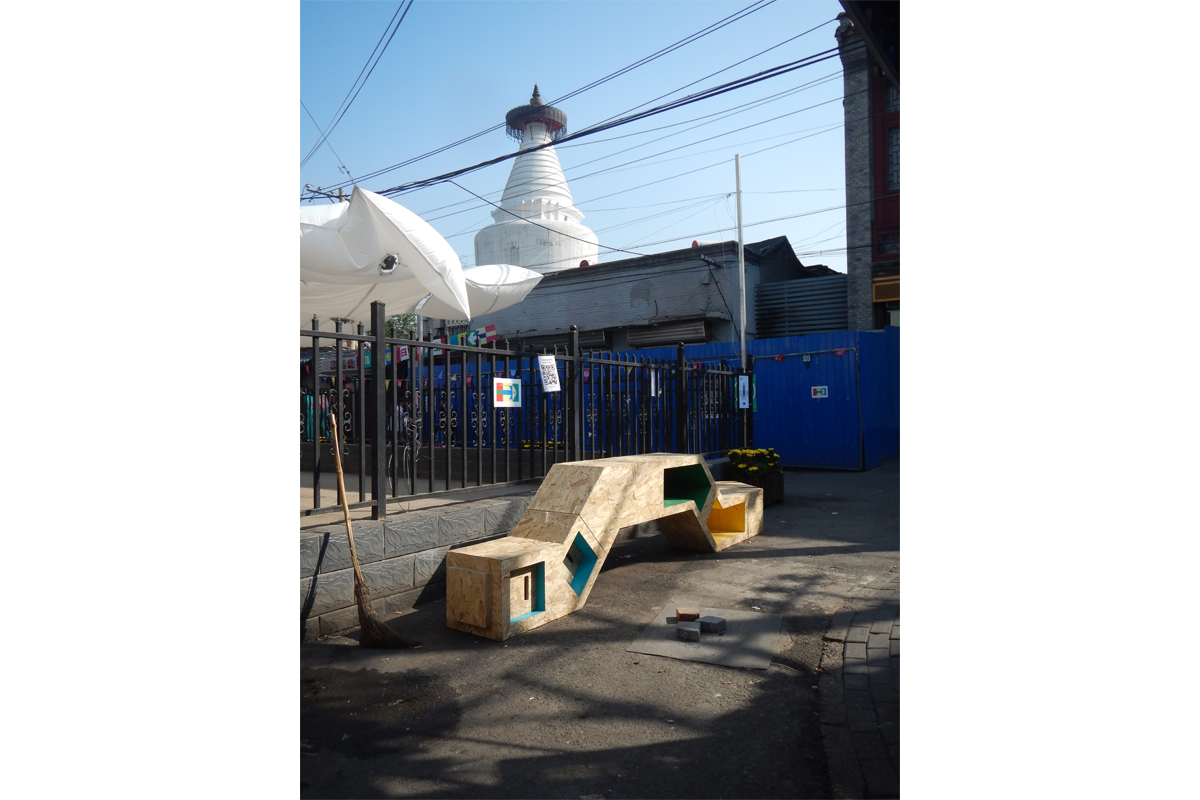
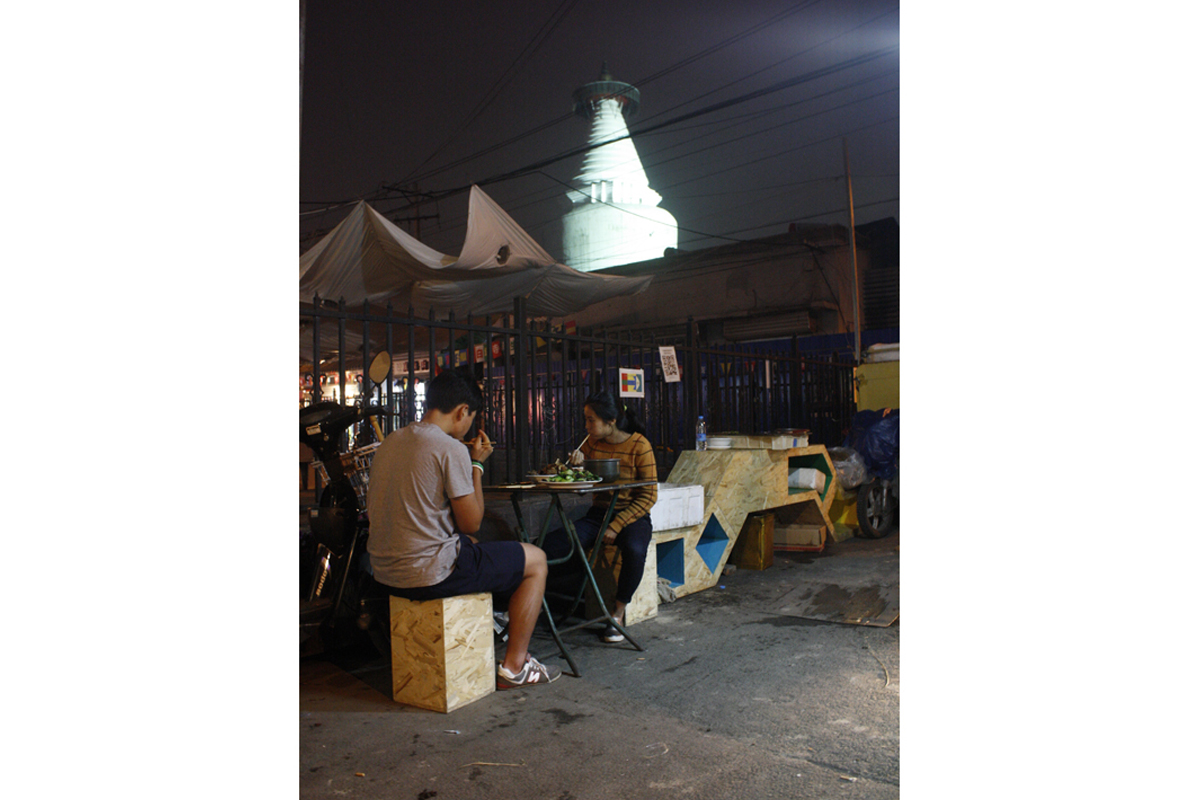
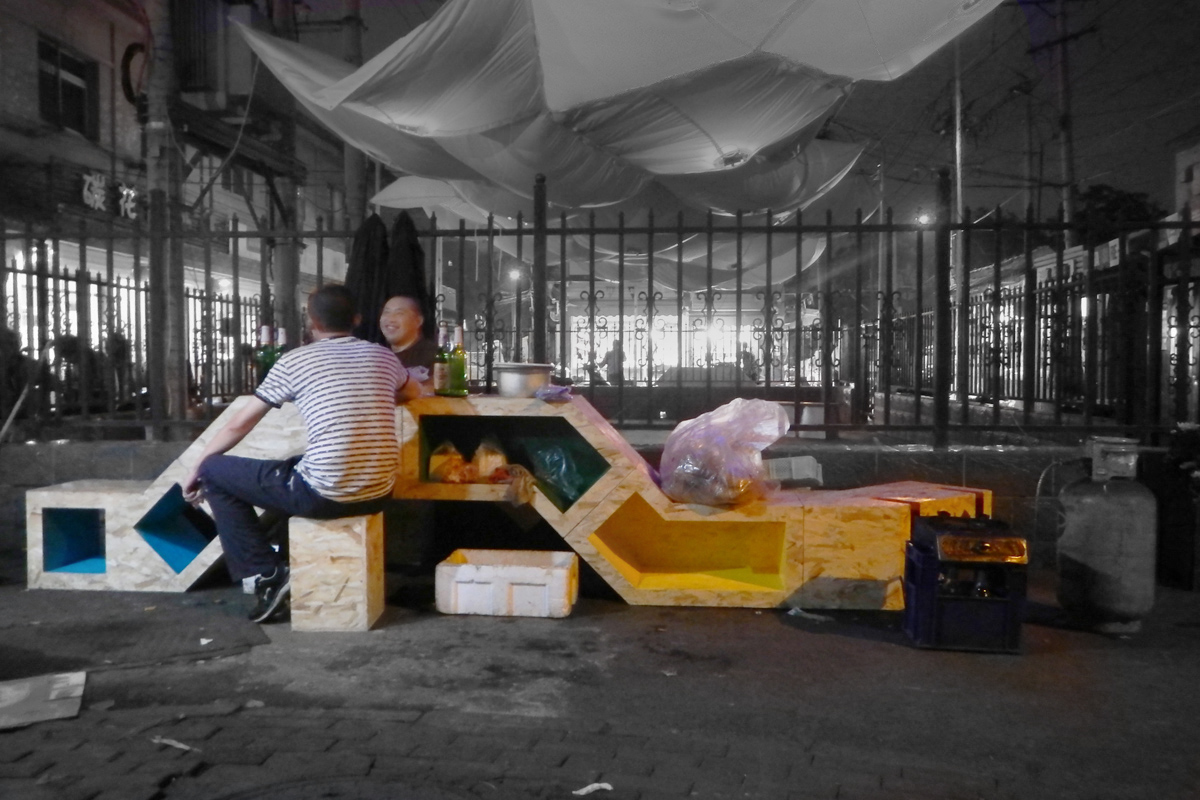
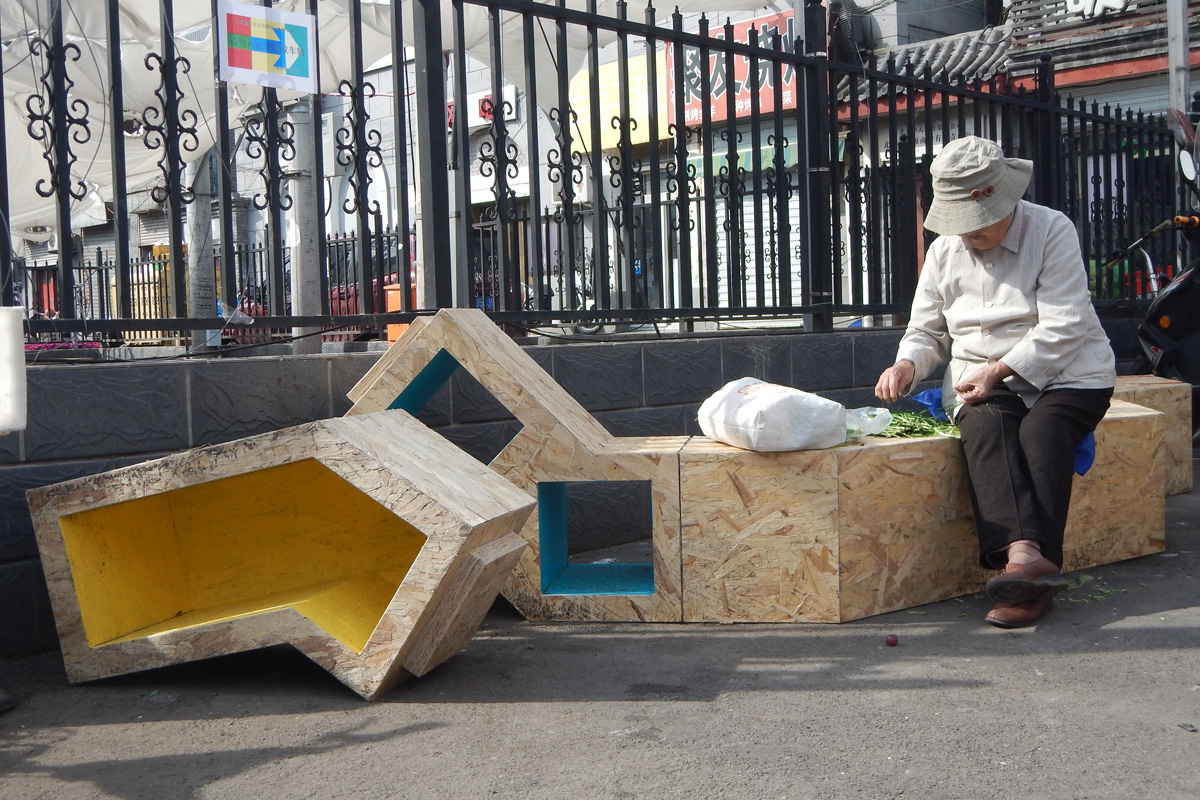
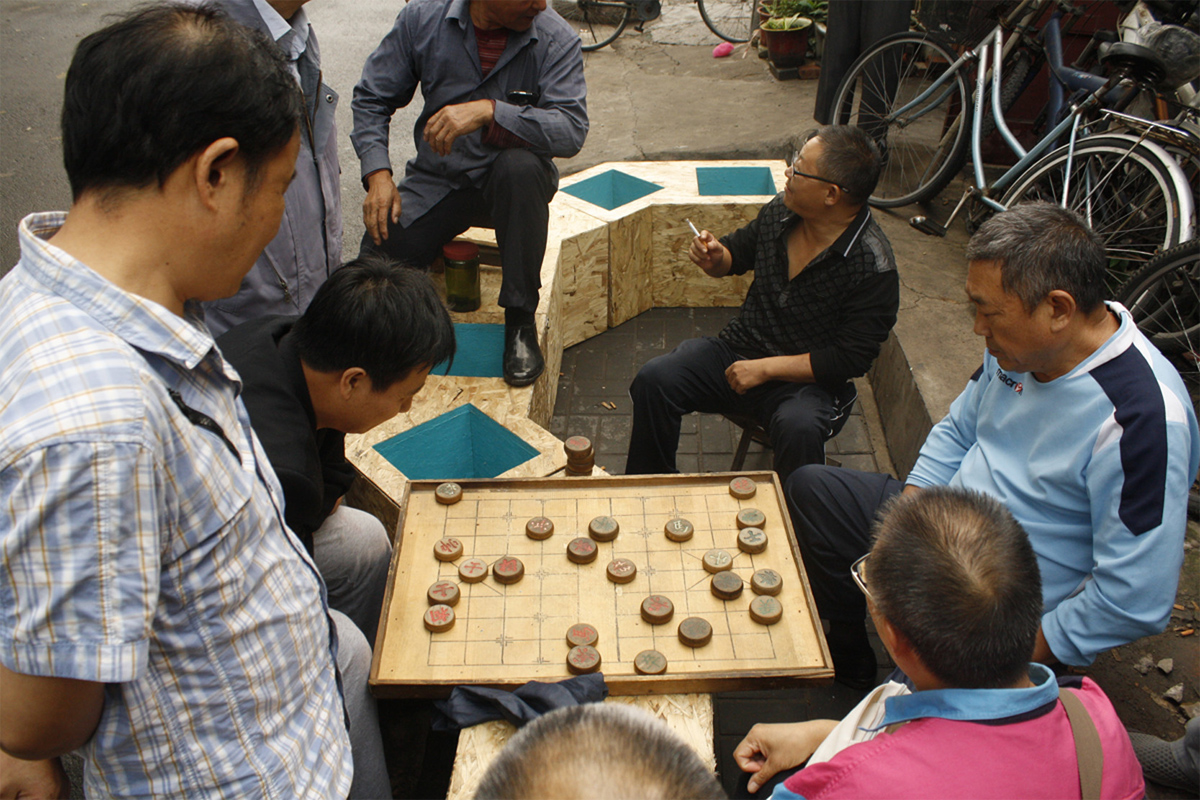
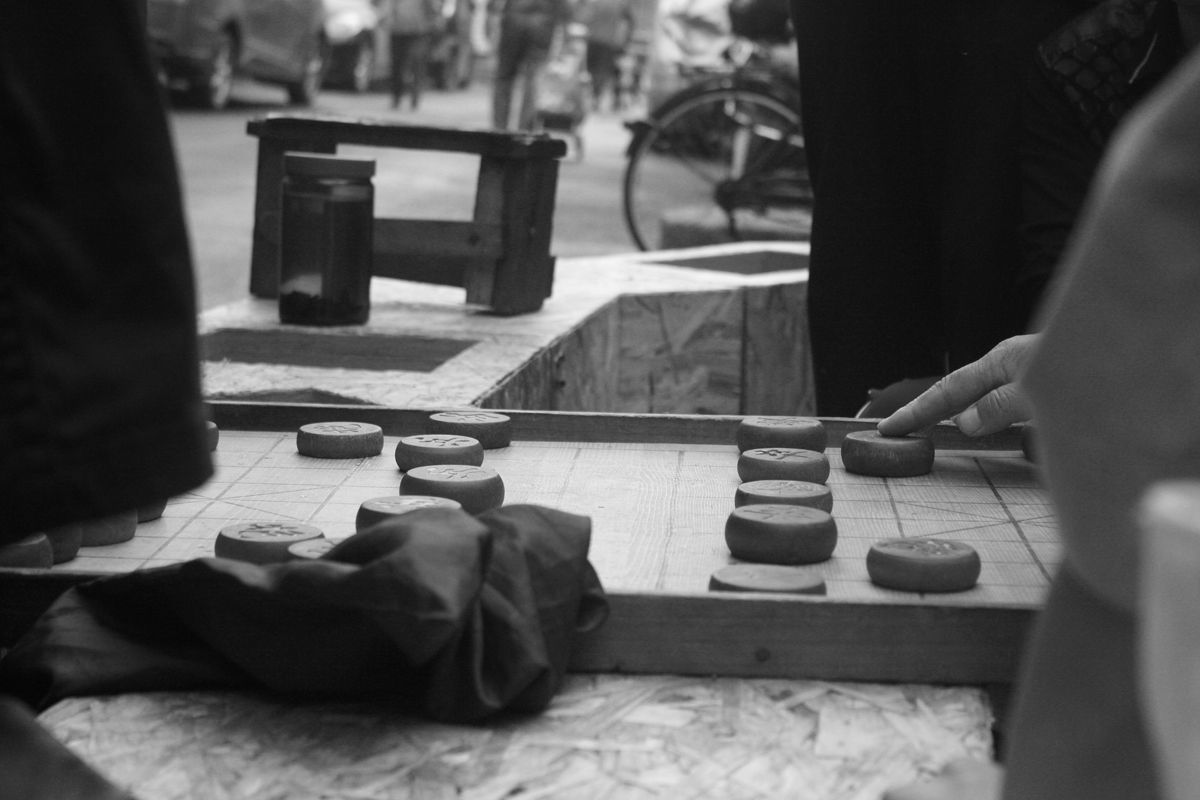
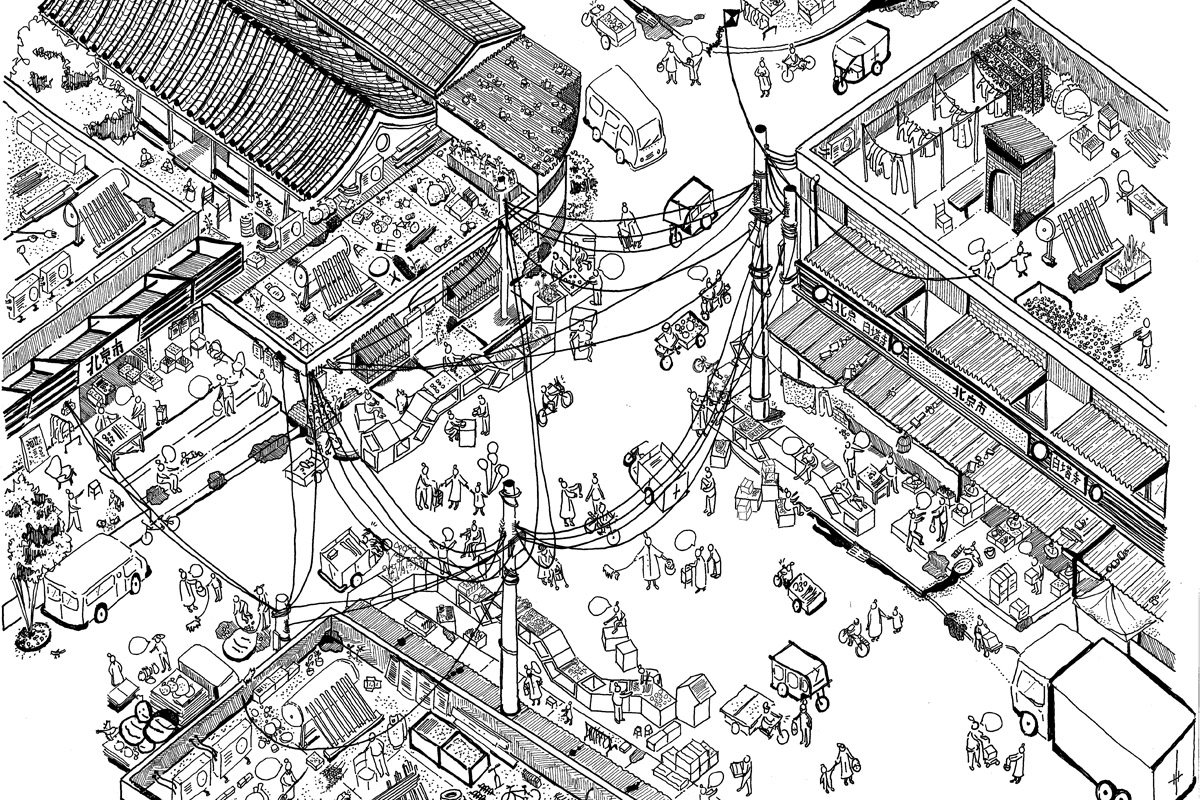
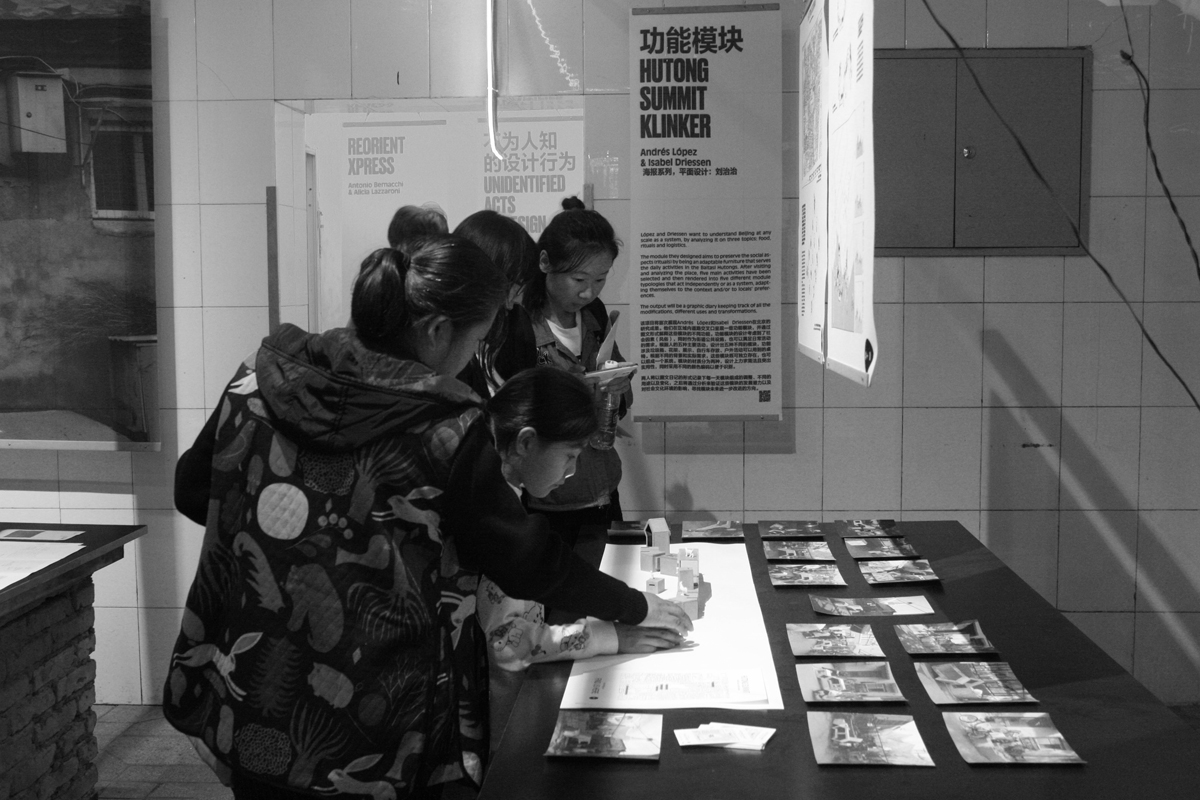
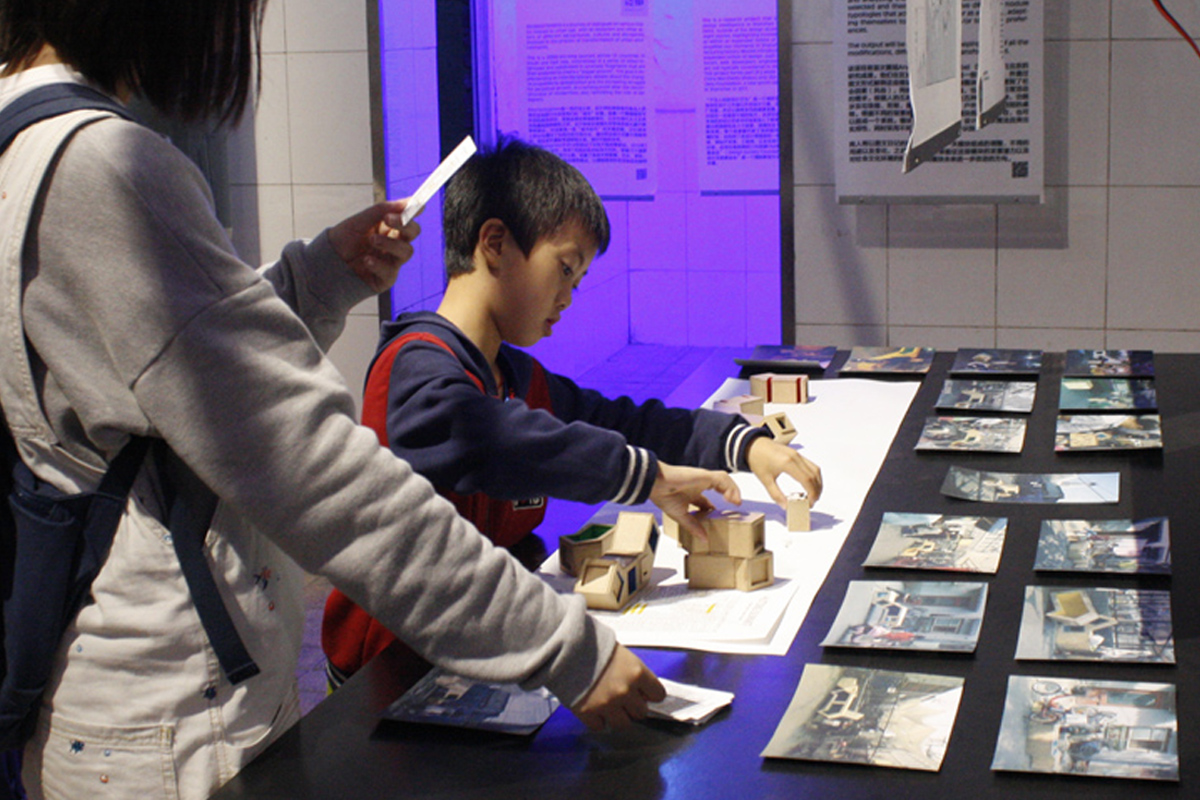
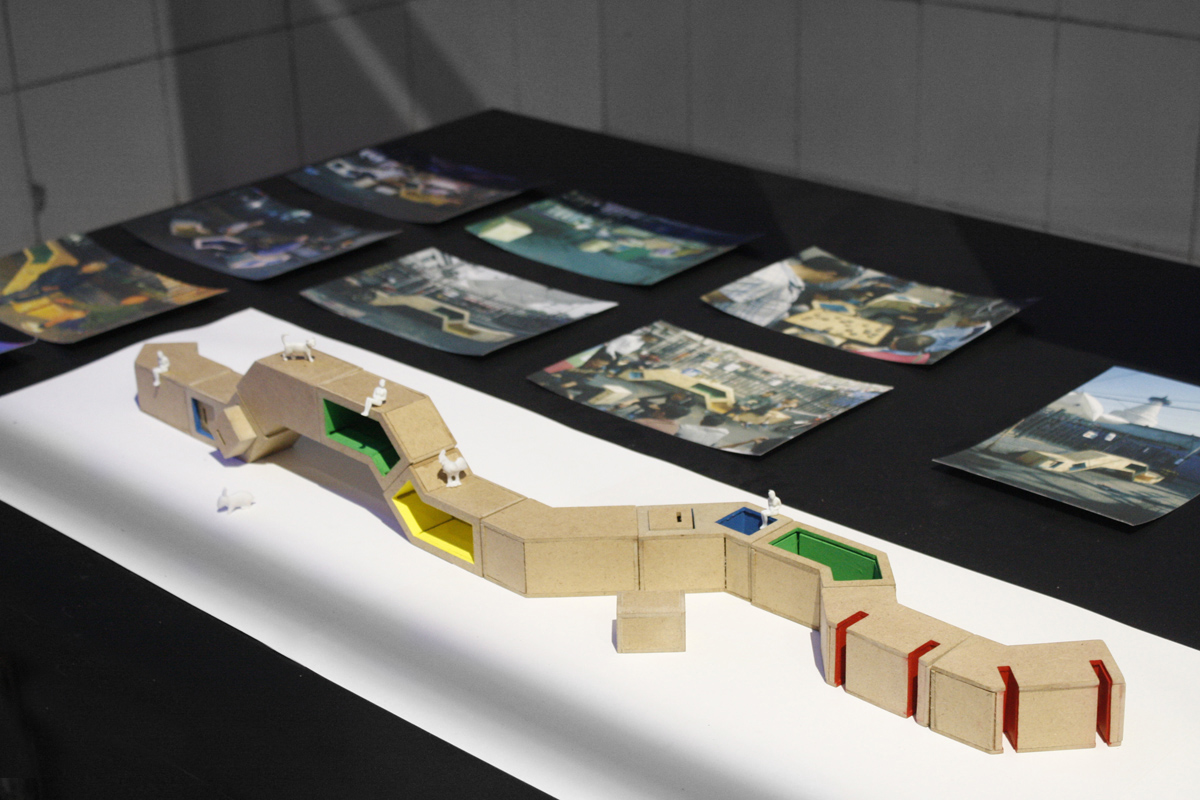
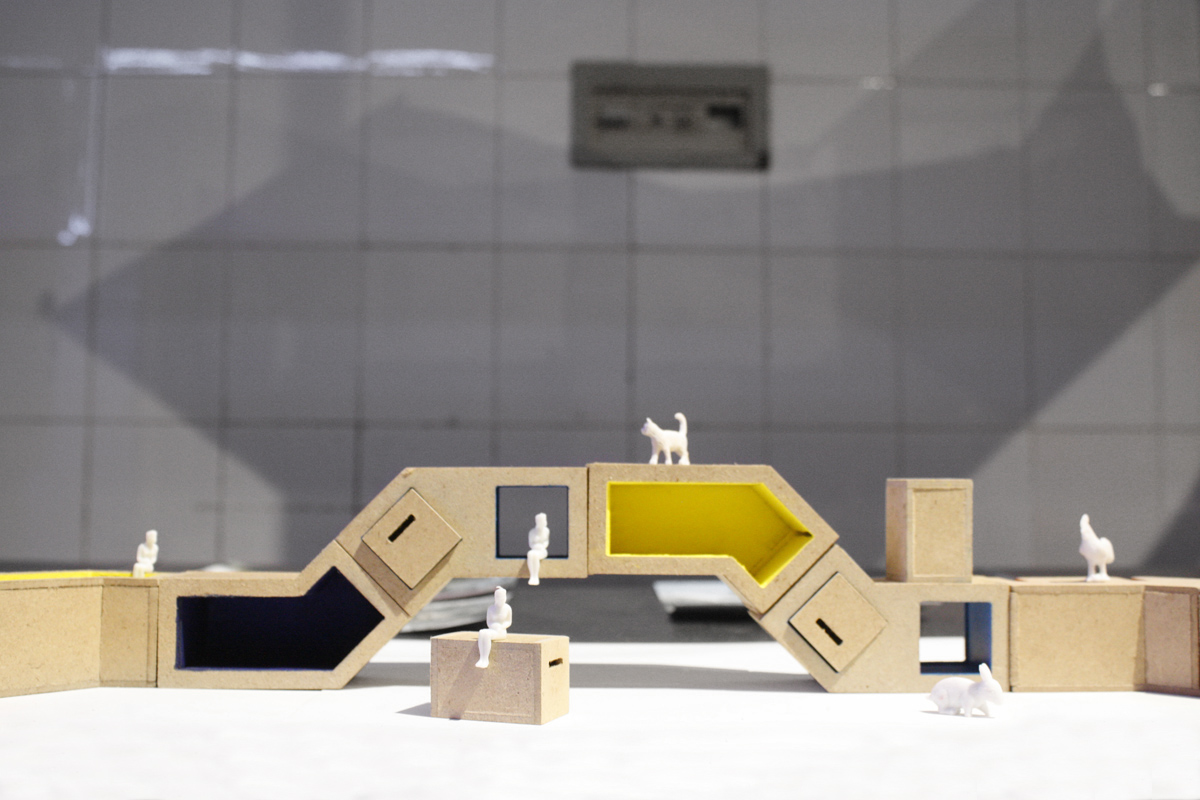
For Beijing design week in 2016, KANTOOR proposed an “urban module” to understand the behaviour of local residents in the public space. The test site was Baitasi, which is one of the research and exhibition areas in Beijing during the design week. The neighbourhood is located in the east of the city 2 kilometres away from the Forbidden City and its name comes from the large Tibetan pagoda located in the middle of the hutongs.
On the contrary of the urban development Beijing has experienced in the last 30 years, Baitasi still remains largely untouched. While most of the new projects are punctual architecture modifications, the area still misses a general urban strategy. As a result of this situation, KANTOOR decided to study the intersections in the Hutongs through the social and functional aspect, where formal and informal coexist.
Focusing mainly on the informal activities, HUTONG SUMMIT aimed to provide the possibility to adapt the space and functions to the activities found in the Hutongs with 5 different modules, named “KLINKERS”. Commercial, Entertainment and Social gathering were some of the activities performed with the modules, where they were all documented in daily photographs that registered the changes and uses during the exhibition.
In the last days of the Design week the modules disappear showing us the adaptability of the Chinese society, where the elements meant to be used only in the public spaces can also be used in the private areas. Leaving us with the unresolved question of the “meaning of public space in China” we wanted to approach from the beginning.
Year:
2016
Team:
Isabel Driessen, Andrés López
Location:
Beijing, China
Client:
Beijing Design Week - Baitasi Remade
Program:
Urban research and exhibition
Size:
1 m²
Status:
Completed
Fabrication:
Solutions